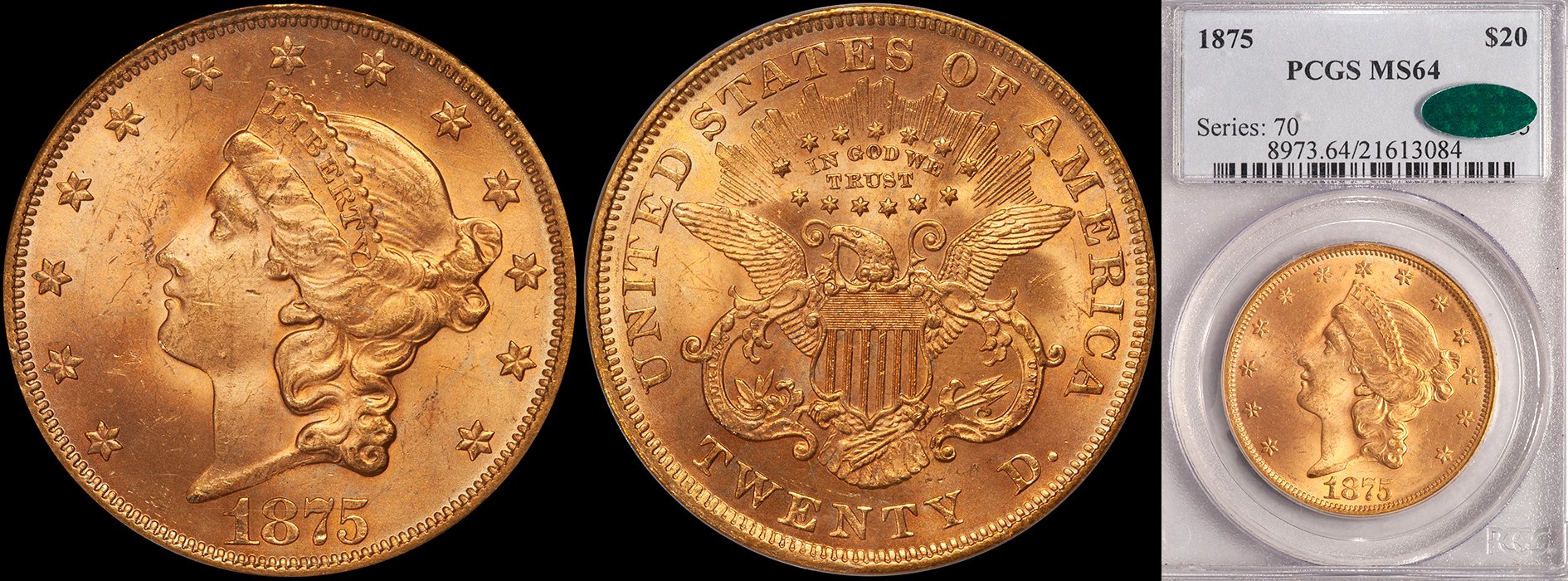The Half Eagles of 1818
/There are just a handful of Capped Bust Large Diameter half eagles produced from 1813 through 1829 that are not very rare. This type includes some of the rarest United States gold issues ever produced so the type collector is left with essentially four dates that are sometimes available: 1813, 1814/3, 1818 and 1820. In my opinion, the 1818 is one of the most interesting of these four issues and it is certainly one of the most misunderstood.
The original mintage for this year is believed to have been 48,588. As with all of the half eagles produced during this decade, a significant percentage of these coins were melted between the year they were produced and the mid-1830’s. This is, of course, due to the fact that the half eagle denomination had its weight reduced in 1834, making the “old style” pieces worth more than face value. For most dates, well over 95% were melted and in the case of the 1818 there are probably no more than 200-250 examples known.
Given the fact that this issue saw little circulation domestically, the majority of the surviving 1818 half eagles tend to be in Uncirculated grades. The small number of circulated examples that do exist are often in the AU53 to AU58 range and these may not have much in the way of wear but tend to show light cabinet friction or signs of numismatic mishandling.
There are three distinct varieties of 1818 half eagle known. All are recognized by PCGS and NGC and each is considered to be an integral part of a date set of Capped Bust half eagles. Let’s take a quick look at each of the three varieties.
1. Normal Dies (Bass Dannreuther-1). The obverse of this variety has a unique feature that is not seen on any other 1818 half eagle. Each star shows a “notch” which is believed to be a signature used by John Reich to indicate that this die was his work. But the obverse is not the side of this coin that specialists use to determine its BD number. This is the only one of the three varieties of half eagle for this year that has a “normal” reverse. The words STATES OF are properly spaced and there is no recutting on the value.
Bass and Dannreuther estimate that between 10,000 and 15,000 examples of this variety were struck and that 50-65 exist. I tend to agree with these estimates. This variety is generally seen in the AU55 to MS61 range and is often characterized by softness of strike at the centers. The coloration is typically a distinctive orange-gold and most have been lightened or processed. The finest I am aware of is Goldberg 2/01: 4009 ($51,750), ex: Superior 2/99: 3184 ($52,900) which has been graded MS65 by PCGS.
The 1818 Normal Dies is the second scarcest of the three varieties known for this year and I think it is an underappreciated issue.
2. STATESOF variety (BD-2). This variety has a different obverse than the Normal Dies but it is immediately recognizable by having virtually no spacing between the words STATES and OF.
Bass and Dannreuther estimate that between 25,000 and 35,000 examples of this variety were produced and that 100 to 125 survive. I think this estimate may be a touch on the low side but the actual number known is almost certainly less than 150.
This variety is the least scarce of the three 1818 half eagles and it is typically seen in Uncirculated grades. I can’t recall having seen more than a handful that graded lower than AU55 and this suggests that the 1818 STATESOF saw little use in circulation. Most examples are better struck than the other varieties for this year and original, untampered with pieces may show excellent frosty luster that is complimented by light to medium lemon-gold hues.
The finest known 1818 STATESOF half eagle is a remarkable PCGS MS66 that was once part of the Norman Stack type set. It is one of the finest half eagles of this type that I have ever seen or am aware of. The current auction record for this variety is held by Heritage 5/07: 2289 that brought $109,250. It is graded MS64 by PCGS.
3. 5D/50 variety (BD-3). The obverse of this third and final variety is different than that seen on BD-1 or BD-2. But it is the blunder on the reverse that gives this variety its notoriety. The D in the denomination was originally cut over a zero; not because the engraver thought this was a half dollar. This reverse was reused in 1819 with the Wide Date obverse.
Bass and Dannreuther believe that between 7,500 and 10,000 were struck and that there are 35-45 survivors. Given the rarity of this issue, these figures seem accurate. This is a rare coin in all grades and most are in the lower Uncirculated grades. There are a few Gems known including a PCGS MS66 and a PCGS MS65 that was last sold as Goldberg 5/01: 1351, where it realized $71,875.
I’ve had the good fortune to handle all three varieties in the past few months and was able to quickly sell each. These 1818 half eagles are some of the more interesting early half eagles and it would be a fun but not overly-ambitious challenge to acquire all three in reasonably comparable grades.









